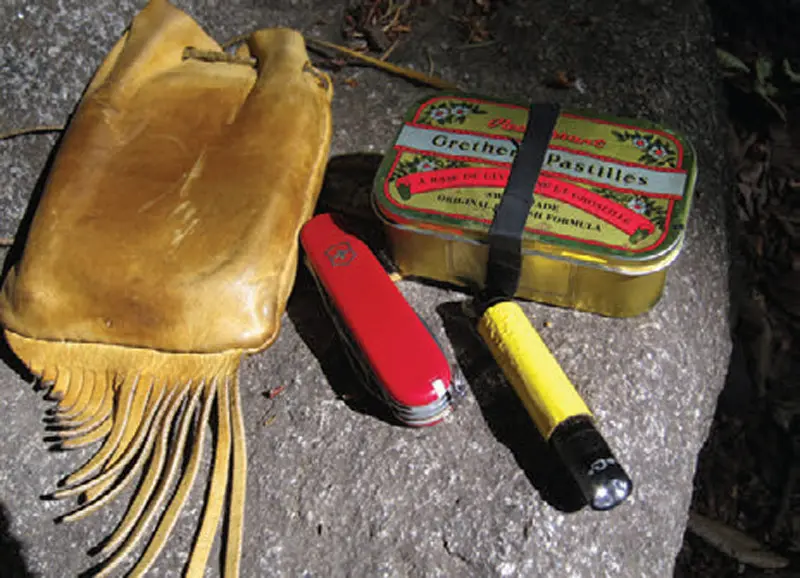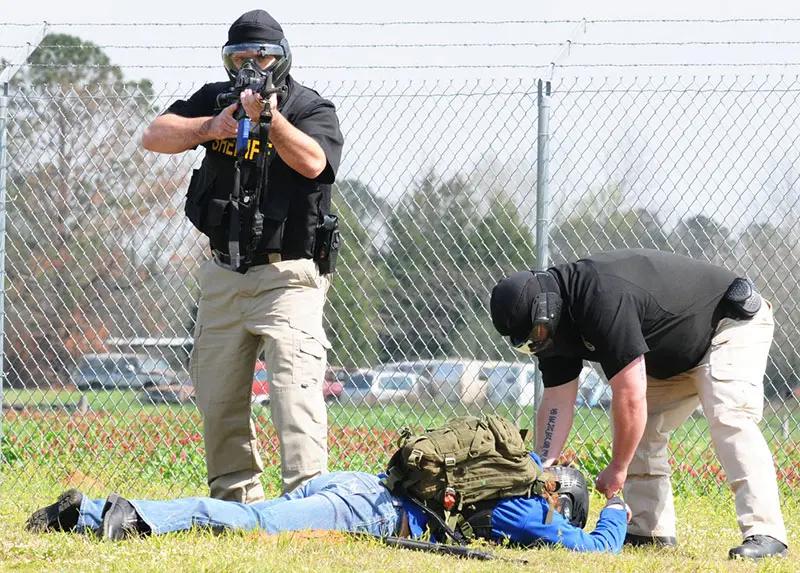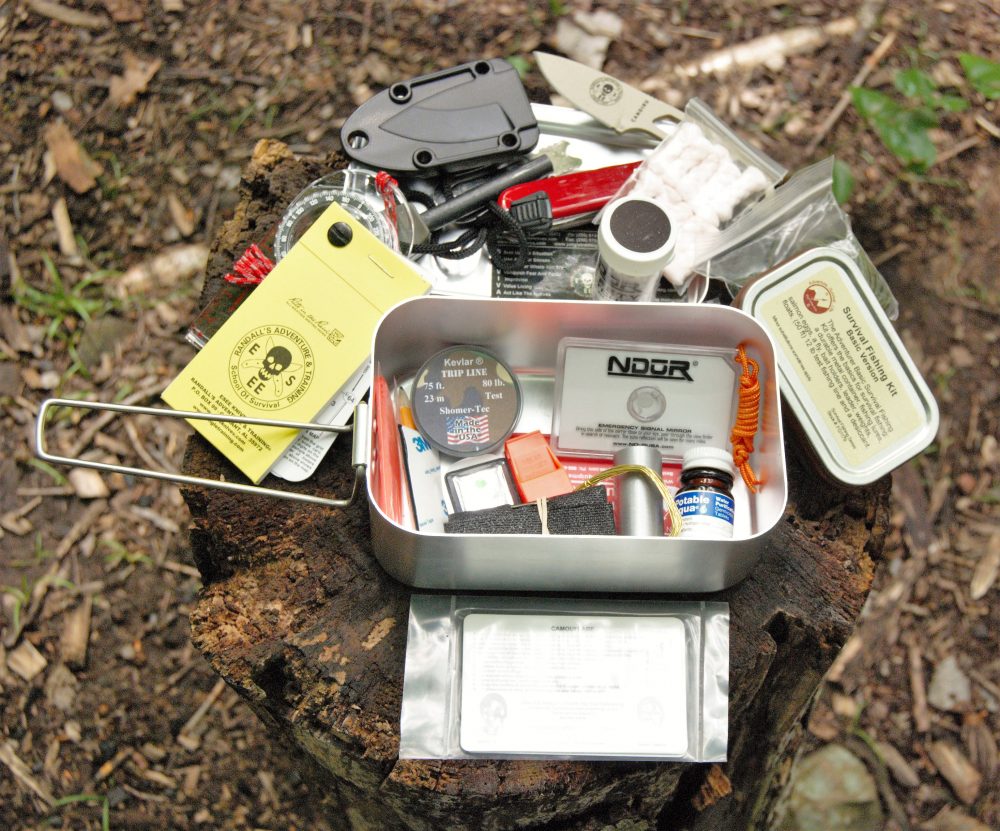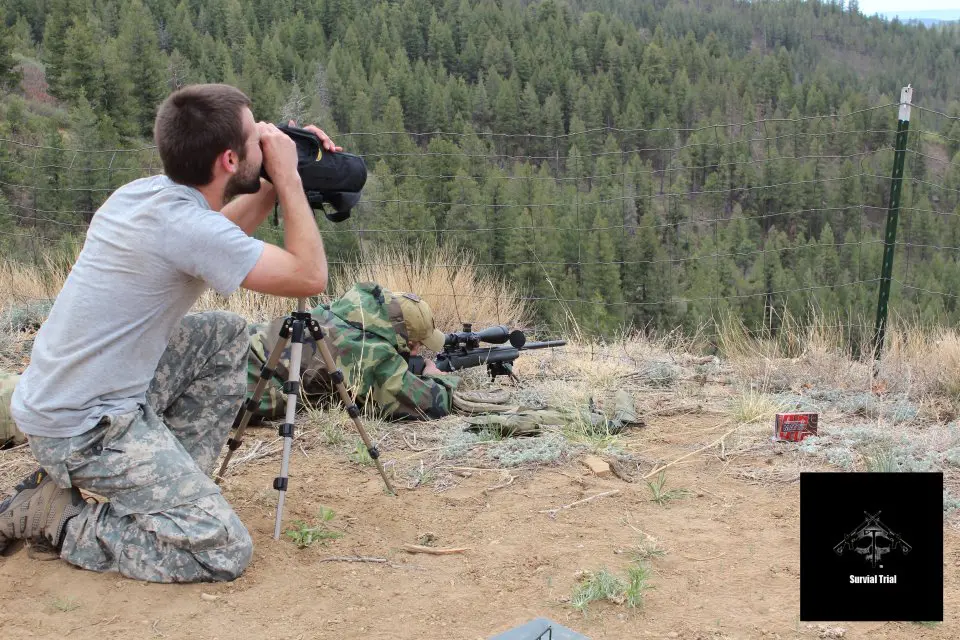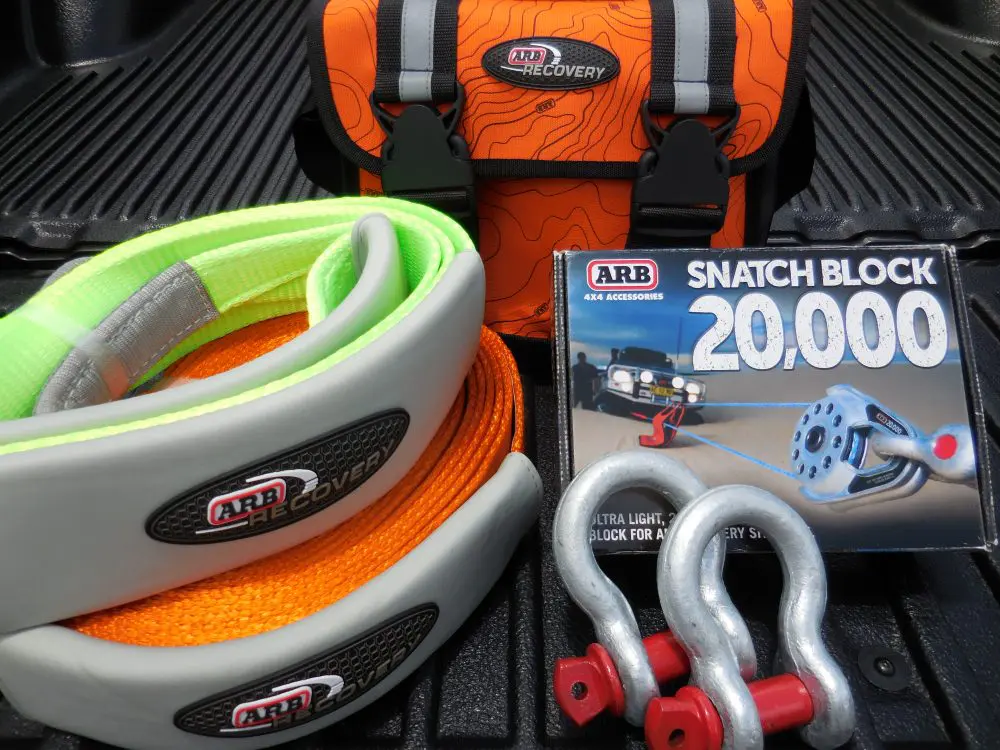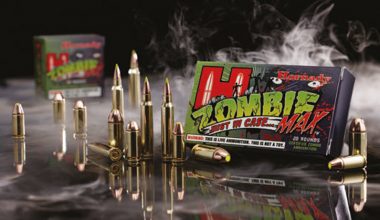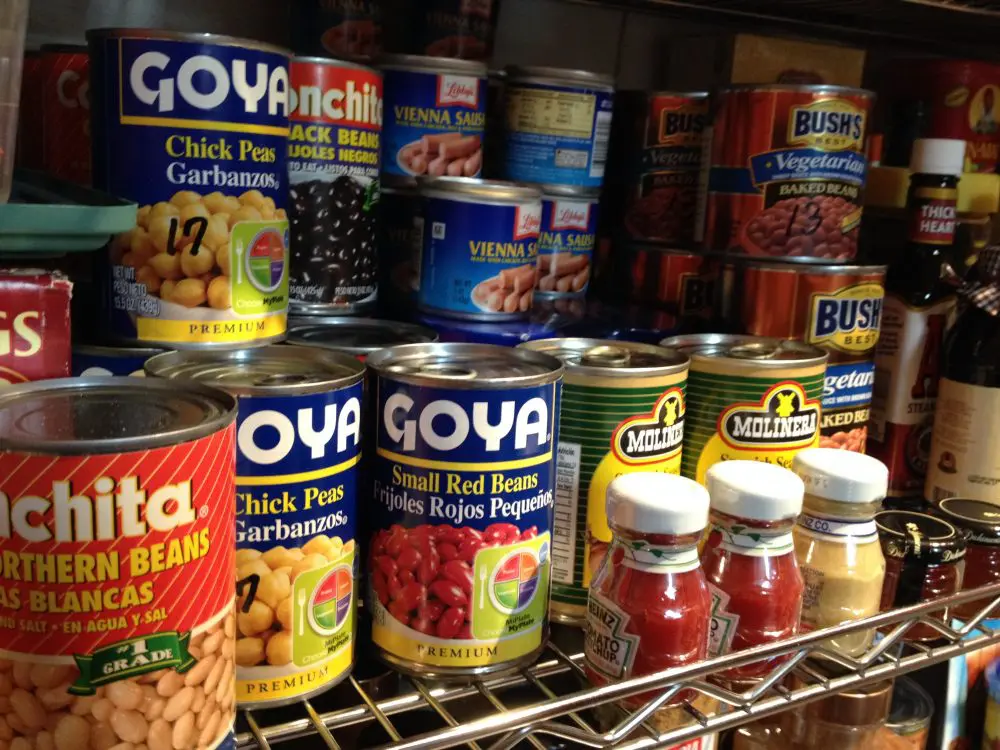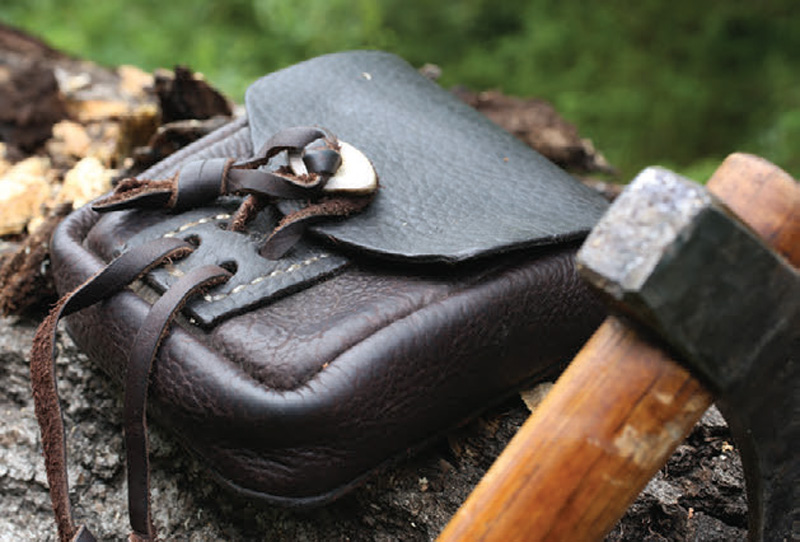
Look at a photograph or illustration of early 1800s frontiersmen or reenactors of that era and you will most likely see a small leather neck pouch or over-the-shoulder bag as part of their kit. Have you ever wondered what is inside these little pouches or what they are called?
These leather pouches are commonly referred to as possibles pouches, are full of necessities and always kept close for easy access. In the days of the mountain men, a possibles pouch was carried on the belt, over the shoulder, or around the neck. They included all that was possibly needed for the day, such as black powder, lead balls, flint & steel, a patch knife, pipe, and some personal items.
A possibles pouch is not a survival kit. A survival kit is put together with emergencies in mind, while a possibles pouch is meant for day-to-day use and contains necessities plus some items for hygiene and comfort. A possibles pouch stays on your person until bedtime. It should be the last thing taken off before turning in and the first thing put on in the morning.
Today, this type of carry has been adapted to modern times and constructed of new materials. Leather and canvas may have been the leading choices of yesteryear, but they were also the only choices.
Now, in the world of synthetics such as Cordura, ripstop nylon, cuben fiber, and vinyl, the options have multiplied. Lighter and larger, yet less durable, bags and pouches are available at sporting goods stores, thrift shops, dollar stores, and online.
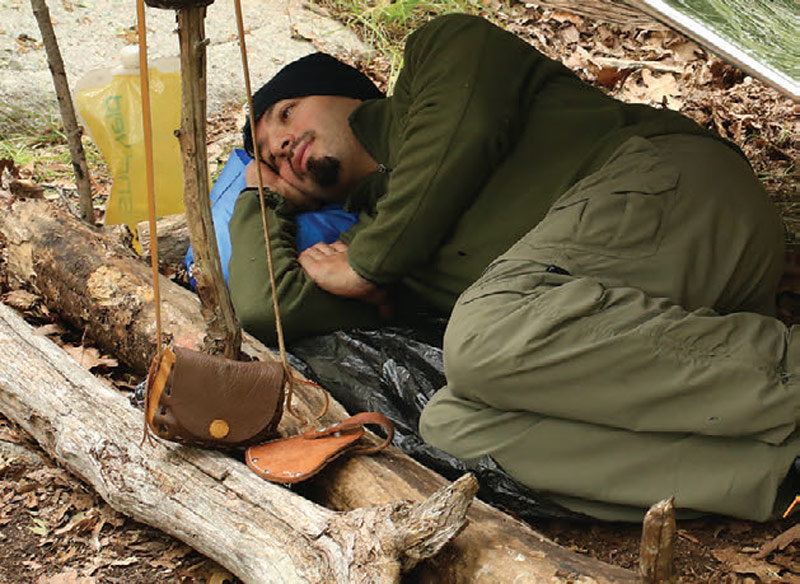
I have a few possibles pouches assembled for my specific uses in the outdoors. Some are heavy-duty, all-inclusive pouches, while one or two are for casual day trips.
I keep these close at hand, literally over the shoulder, with my backpack on top. If my pack accidentally goes floating down the river or I decide to scout the area near my established camp, the possibles pouch goes with me—period!
This isn’t a purse. In fact, anyone can tell the difference between a purse and a possibles bag just like they can see the difference between a mountain man and a girly man. Make no mistake, wearing a possibles bag is manly— mountain manly!
STAYING ORGANIZED
After years of fine tuning my gear and needs, I’ve realized that the same gear doesn’t work for every type of terrain, yet the essentials don’t change much, no matter where in the world I find myself.
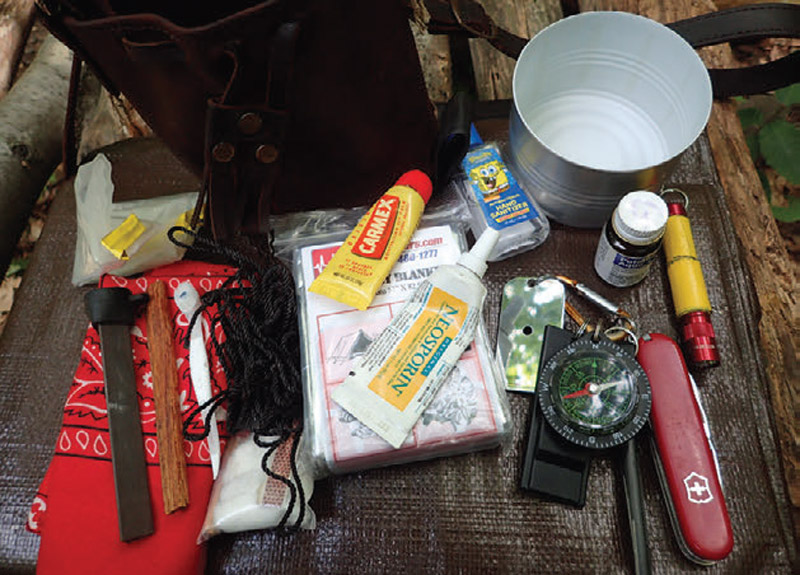
I have one pet peeve during backpacking and survival class trips: I hate emptying my pockets at night and finding a place for everything, and reloading my pockets and gearing up the next morning. It’s easier to grab one thing and go. It keeps things organized and easy to get to.
Without making this a “what I carry in my kit” list, I will just mention what I keep in my pouch in addition to the essentials. During a multi-day camp, I make sure to have the most indispensable survival items with me. Then I add a sharpening ceramic or some kind of light and packable sharpening device.
I keep one ounce of hand sanitizer as a quick way of staying hygienic outdoors. I carry Carmex lip balm in a squeeze tube for not only the obvious, but also for spreading on a cotton ball as extra fuel during emergency fire lighting. (Lip balm has hundreds of uses in the outdoors as well as at home.) I have a small Wisp-style toothbrush that I use for a few days before discarding.
I carry a one-ounce glass vial of iodine to treat water and a small water bag, along with half a tube of Neosporin for any minor cuts. I have an extra AAA battery for my light. Lastly, I throw in a small chunk of Fatwood for an extra measure of fire lighting.
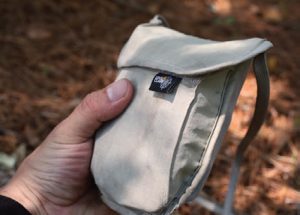
One possibles pouch I own is large enough to stash a small aluminum coffee cup that started life as a venison sausage can. All my kit contents nestle in the cup and easily fit inside my pouch. I also store my ID, debit card, money, and emergency contact card in a small Ziploc bag (backpackers’ wallet) in the possibles pouch.
POUCHES
If you want a traditional-looking possibles pouch, look no further than Matt Lesniewski of ML Knives. His bags come in various sizes and can be custom made to your specifications, but they are a little on the expensive side.
Just below his bags are those that can be obtained from mass-produced outfitters like Crazy Crow or Track of the Wolf—mostly of fair quality and made from leather and synthetic leather.
For a more modern and lighter approach that won’t break the bank, check out Gossamer Gear’s pouches, which can attach to a backpack hip belt or hang free. These are the lightest that can be found—period! Materials range from ripstop nylon to cuben fiber, the lightest materials for tarps and backpacks.
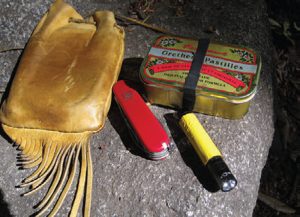
I have had good luck using a traveler’s neck pouch from Lewis N Clark. It’s a lightweight, light-colored ripstop nylon pouch that can be worn around the neck or over the shoulder for more comfort and security. These are easy to find online or in travel stores.
I have also found possibles pouches suitable for the outdoors in Mexico and Peru. They do fine leatherwork in both countries and often do custom work while you wait or go for a drink.
The three leather possibles pouches that I rotate all come from Mexico and are good quality. Some arts and crafts stores carry pouch kits that need to be assembled but come with all the pieces and instructions. I used one like this for five years before changing it out for a larger pouch. It carries the marks of well-used leather from smoke, sweat, moisture, soot, and dust, and will forever smell like a campfire.
Nylon camera and binoculars cases make good possibles pouches. To help conserve room inside the pouch, take advantage of the zippers and hang items like clip-on lights, whistles, compasses, or other useful gadgets from them. Military surplus bags (first aid or ammo pouches) are also good options.
As you can see, a possibles pouch is the opposite of a survival kit like an Altoids tin that people cram full of anything small enough to fit inside. Carrying a possibles pouch is more along the lines of carrying larger, important items that improve one’s life in the outdoors, plus some tools like sharpeners, files, medications, or even a cup.
Trial and error will tell you what you need and what you don’t need in your possibles pouch. Just don’t call it a purse!
